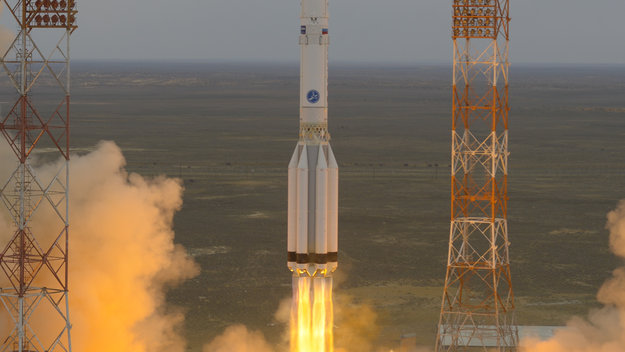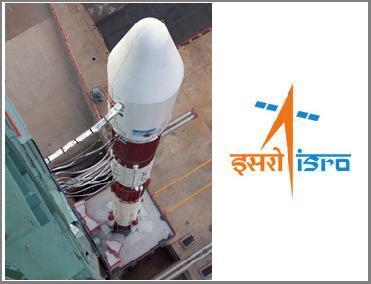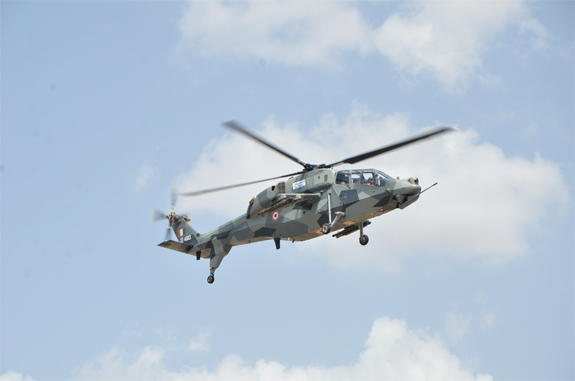
ExoMars 2016 lifts off from the Baikonur cosmodrome. An ESA photo
BAIKANUR, KAZAKHSTAN (AFP): A joint European-Russian mission aiming to search for traces of life on Mars blasted off Monday for the start of a seven-month unmanned space journey to the Red Planet.
A Proton rocket carrying the Trace Gas Orbiter to examine Mars's atmosphere and a descent module that will conduct a test landing on its surface launched into an overcast sky at the Russian-operated Baikonur cosmodrome in the Kazakh steppe at 0931 GMT (1501 IST).
The spacecraft carried out a series of engine burns to get it onto the right trajectory to Mars. It was then released from the Briz-M rocket booster at 20:13 GMT to begin its 496-million-kilometre voyage through the cosmos.
The ExoMars 2016 mission, a collaboration between the European Space Agency (ESA) and its Russian equivalent Roscosmos, is the first part of a two-phase exploration aiming to answer questions about the existence of life on Earth's neighbour.
The Trace Gas Orbiter will examine methane around Mars while a lander dubbed Schiaparelli will detach and descend to the surface of the fourth planet from the Sun.
The landing of the module on Mars is designed as a trial run ahead of the planned second stage of the mission in 2018 that will see the first European rover land on the surface to drill for signs of life, although problems with financing mean it could be delayed.
One key goal of the Trace Gas Orbiter is to analyse methane, a gas which on Earth is created in large part by living microbes, and traces of which were observed by previous Mars missions.
"TGO will be like a big nose in space," said Jorge Vago, ExoMars project scientist.
Methane, the ESA said, is normally destroyed by ultraviolet radiation within a few hundred years, which implied that in Mars' case "it must still be produced today".
TGO will analyse Mars' methane in more detail than any previous mission, said ESA, in order to try to determine its likely origin.
One component of TGO, a neuron detector called FREND, can help provide improved mapping of potential water resources on Mars, amid growing evidence the planet once had as much if more water than earth.
A better insight into water on Mars could aid scientists' understanding of how the Earth might cope in conditions of increased drought.
Schiaparelli, in turn, will spend several days measuring climatic conditions including seasonal dust storms on the Red Planet while serving as a test lander ahead of the rover's anticipated arrival.
 Previous Article
Previous Article Next Article
Next Article













The Indian Air Force, in its flight trials evaluation report submitted before the Defence Ministry l..
view articleAn insight into the Medium Multi-Role Combat Aircraft competition...
view articleSky enthusiasts can now spot the International Space Station (ISS) commanded by Indian-American astr..
view article